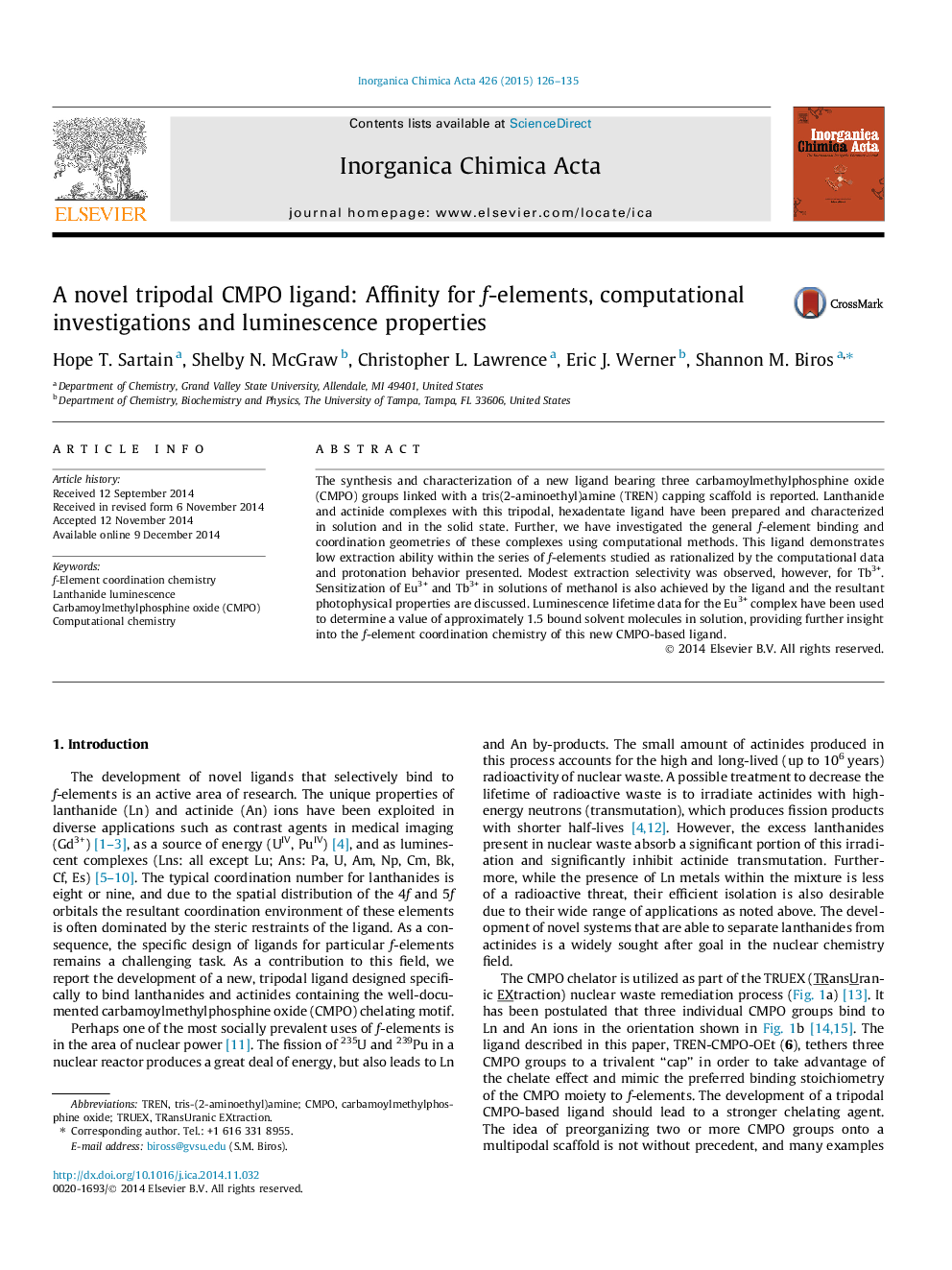| Article ID | Journal | Published Year | Pages | File Type |
|---|---|---|---|---|
| 1306737 | Inorganica Chimica Acta | 2015 | 10 Pages |
•The synthesis of a novel tripodal ligand bearing the carbamoylmethylphosphine oxide (CMPO) group is reported.•The complexes of this ligand with lanthanides and actinides have been characterized by IR and CHN analysis in the solid state.•We have calculated the structure of the metal–ligand complexes using density functional theory (B3LYP/SDAll).•This ligand demonstrates modest selectivity for the extraction of Tb3+ out of aqueous solution (pH 1 and 7).•This ligand sensitizes the luminescence of Eu3+ and Tb3+ in solutions of methanol.
The synthesis and characterization of a new ligand bearing three carbamoylmethylphosphine oxide (CMPO) groups linked with a tris(2-aminoethyl)amine (TREN) capping scaffold is reported. Lanthanide and actinide complexes with this tripodal, hexadentate ligand have been prepared and characterized in solution and in the solid state. Further, we have investigated the general f-element binding and coordination geometries of these complexes using computational methods. This ligand demonstrates low extraction ability within the series of f-elements studied as rationalized by the computational data and protonation behavior presented. Modest extraction selectivity was observed, however, for Tb3+. Sensitization of Eu3+ and Tb3+ in solutions of methanol is also achieved by the ligand and the resultant photophysical properties are discussed. Luminescence lifetime data for the Eu3+ complex have been used to determine a value of approximately 1.5 bound solvent molecules in solution, providing further insight into the f-element coordination chemistry of this new CMPO-based ligand.
Graphical abstractWe report here the synthesis and characterization of a new ligand bearing three carbamoylmethylphosphine oxide (CMPO) groups linked with a tris(2-aminoethyl)amine (TREN) capping scaffold. This ligand sensitizes the luminescence of Eu3+ and Tb3+ in solutions of methanol, and demonstrates modest selectivity in the extraction of Tb3+ ions from aqueous solution.Figure optionsDownload full-size imageDownload as PowerPoint slide
